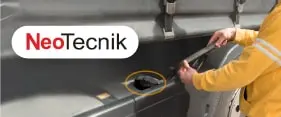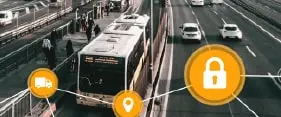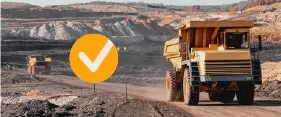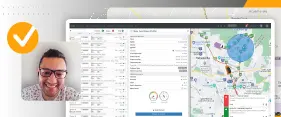The shutdown of 2G-3G networks is a reality, even though they are the most popular networks with the highest number of M2M devices connected in Latin America. Are you prepared to survive it?
Table of Contents
1. A Bit of History
2. Why Does It Affect Your Business?
3. How to Respond to the Change
4. What Comes After?
5. How Does This Not-So-Distant Future Affect Our Industry?
6. Is Your Business Prepared?
A Bit of History
The 2G and 3G networks, commercially launched in 1991 and 2001, respectively, were revolutionary generations in the field of telecommunications. In the case of 2G, it meant the transition from analog to digital communications.
This involved the encryption of voice calls (which in 1G networks were only modulated at higher frequencies), a more efficient utilization of the radio frequency spectrum, accommodating more users in each band, and primarily the emergence of data services for mobile phones, as it was the birth of SMS. It also marked the expansion of the internet to mobile devices.
Perhaps the reason the network is under scrutiny for shutdown is that 3G was more of an incremental and inevitable improvement than anything else. But don't be mistaken, it brought the first tangible step between generations in a key aspect: speed.
The improvement in data transmission speeds (up to 7 times faster than 2G) made it possible for applications and devices that required more data without delays or loss of fluidity to take off. This happened with mobile video, which, while taking its first steps with the previous generation, saw exponential growth with increased transmission capacity.
"And all of this while maintaining voice capabilities for phone calls without resorting to more cumbersome implementations, unlike what would happen with 4G, which works with VoLTE (Voice over LTE) or falls back to 2G or 3G.
Why Does It Affect Your Business?
Because many ecosystems have been taking advantage of the capabilities of these networks, sufficient for most of their requirements but cost-effective in terms of fees, rights, patents, and hardware, such as POS payment systems, security alarms, service consumption meters (gas, electricity, water), that is, Machine-to-Machine (M2M) and Internet of Things (IoT) devices.
While there are many devices compatible with 4G for the AVL, fleet management, and vehicle connectivity industries, the reality is that the vast majority still relies on 2G and 3G networks, not only for the mentioned factors but also because they are empowered by the geographic coverage of these technologies compared to the younger ones.
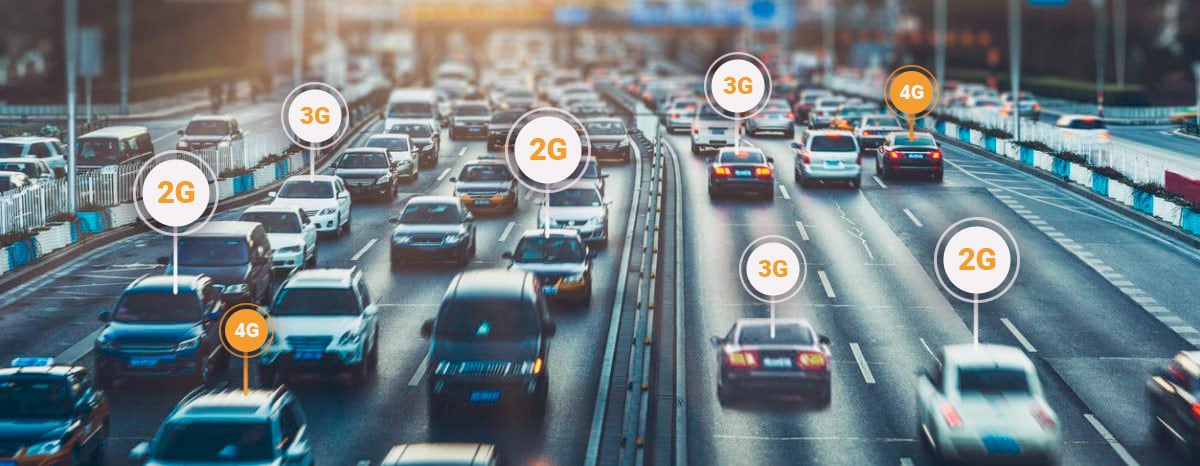
According to our research and customer feedback, in our area of interest (Latin America and Spain), the shutdown is happening both in a scheduled manner (where the choice to shut down one or the other or both depends on the region) and in an organic or covert manner, not replacing damaged antennas or directly replacing them with 4G ones.
This creates coverage gaps or areas without real-time coverage, leading to issues with location accuracy and risks to the security of monitored assets.
It should be noted that the shutdown differs not only between regions but also among operators. In Spain, for example, Movistar talks about shutting down 3G in 2025 but doesn't mention 2G, similar to Vodafone, which mentions a shutdown between 2022 and 2024. In contrast, Orange mentions the end of 2G by the same date without mentioning 3G.
In Mexico, Movistar has been announcing and postponing the shutdown of the 2G network every year since around 2019.
In Brazil, the adoption of new networks has been significantly higher, and by 2019, 67% of its connected devices belonged to LTE (4G) technology, similar to Chile, with 65% on this network.
The fact is that, particularly in Latin America, operators have been more reserved regarding their concrete plans, creating an even more uncertain situation.
How to Respond to the Change
So, how can you respond to this reality? First, you should analyze the local situation. Try to investigate what the actual state of the shutdown is for local providers and whether it's affecting 2G, 3G, or both equally in your area of influence.
Keep in mind that if the major operators in your region have a substantial base of devices on these networks and aren't actively migrating, they might be extending their lifespan for a few more years. In any case, make sure to know if they will start with one or the other, to have a real sense of the impact on your devices and where to begin taking preventive measures.
Make sure to learn about the geographical coverage of alternative networks since, while they are continuously expanding, they may not yet fully meet your needs.
Conduct a financial analysis: How does a planned migration replacing equipment affect your business? Do you have options for financing? Are your customers in a position to cover the entire cost, or will you cover it, or will it be a shared cost?
Try the exercise of simulating the replacement of all your devices. Analyze the combination of technologies and providers.
Keep in mind that, as it's not something that providers are communicating with precise dates and certainty, the equipment that should be replaced is still current and still has some value in the second-hand market, which won't be the same once the shutdown becomes visible and tangible to everyone.
Once you've determined your situation, start the replacement plan. It's an excellent opportunity to take advantage of the benefits of modern equipment and networks, where you'll find advantages, such as longer battery life, lower data consumption, the possibility of working with fallback to other networks (4G to 2G or 3G, cellular + satellite, etc.), among others.
The important thing is to be aware that this is a reality, and remember that the sooner you act, the more you can defend the value of devices to be replaced, and you'll buy ahead of the increased demand when everyone wants to do it at the same time.
What Comes After?
While it's expected that 4G will have an extended lifespan, it's also expected that it won't be as long as 2G or 3G. It's true that it was developed with the intention of not having limitations that lead to premature obsolescence, but the reality is that the 5G network offers a superior proposal by incorporating mainly 3 versions:
- Low-band: primarily behaves like 4G, with frequency ranges similar to 4G, slightly faster data transfer speeds, and antennas with coverage also comparable to 4G.
- Mid-band: at higher frequencies (2.5 to 3.7 GHz) can triple or almost quadruple the speed while maintaining an acceptable coverage range, making it, in many cases, the preferred version of this technology, above the previous one.
- High-band: or millimeter-wave (mmWave), while allowing extremely high speeds (in Gbit/s), has a much more limited range, which is even interrupted by objects blocking the line of sight between the antenna and the device. This makes it require multiple small cells to function correctly, so its application will be limited to densely populated cities or special use cases.
So, it's highly likely that 4G and 5G will coexist for a long time, as they ultimately complement each other in the same way that 2G and 3G have previously done with 4G.
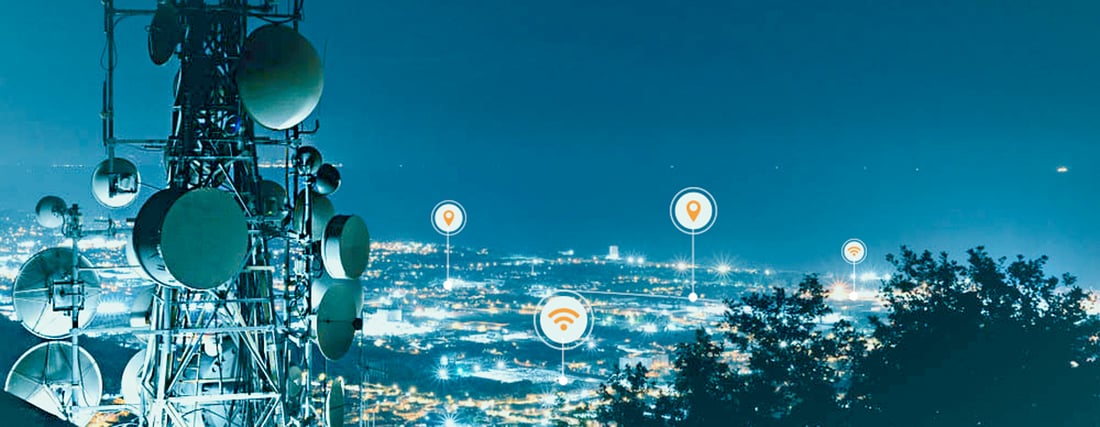 And moving forward, the revolution in networks is expected to solidify.
And moving forward, the revolution in networks is expected to solidify.
Tests of 6G suggest an even more advanced version of what mmWave offers. Recently, successful outdoor transmission tests at a distance of about a hundred meters have been conducted by LG, which in laboratory conditions achieved speeds of up to 48 GB/s! Just imagine what this could mean for simultaneous video transmission from different cameras in a single vehicle.
Applications of such data transfer speeds reinforce the rumors that a future of convergence between Wi-Fi and cellular networks into a single WAN awaits us, where all devices in an IoT ecosystem, or rather IoE (Internet of Everything), will be interconnected.
How Does This Not-So-Distant Future Affect Our Industry?
We're talking about connected vehicles (things/objects), processes, people, and data. This includes V2V (vehicle-to-vehicle) communication, sharing information, statistics, intentions, limits, restrictions, and any other data that affects decisions or the resulting information for actions.
Imagine this in communication protocols, standardizations, and more.
If we are heading towards such a connected future, will this perhaps be the last purchase of trackers you make? Will you have to think only about accessories or sensors in the future? Will the challenge remain on the software side?
Sounds interesting, doesn't it?
The truth is that we are living in an unparalleled time. We are the privileged ones who are driving and experiencing change, and it's exciting.
The question again: Is your business ready?
The shutdown is real and will arrive sooner rather than later. Get local information and evaluate. Make a plan. Implement it.
Act in time, and you can turn what will be a problem for others into a competitive advantage.
You Might Also Be Interested In 
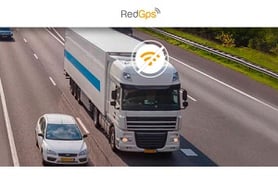
What should you do if a GPS tracker stops working? |

5 Benefits of Real-Time GPS Tracking |

GPS Tracking Focused on Security: Guide 2023 |
